
How to Create a Google Business Profile: Your Set Up Guide
Published: January 10th, 2022
Last Updated: January 23rd, 2024
Google Business Profile (formerly known as Google My Business) is one of the most effective tools for local business marketing. Without GBP, businesses are unable to feature in the Local Pack or Local Finder, which should be a key goal for businesses of this nature.
Creating a Google Business Profile for your business, or the local businesses that you’re working with, is an essential first step towards SEO success. Setting this up properly is critical, so this comprehensive guide will show you the best way to set up a Google Business Profile.
Step-by-step: How to Create a Google Business Profile
1. Create a Google Account Specifically for Your Business
Before you can create a Google local listing, you’ll need to create a Google Account. Google Accounts are available to everybody and are simple to use.
You can either use an existing email to set up your Google Account or you can make a new one. Visit accounts.google.com and select ‘Create an account’ to get started.
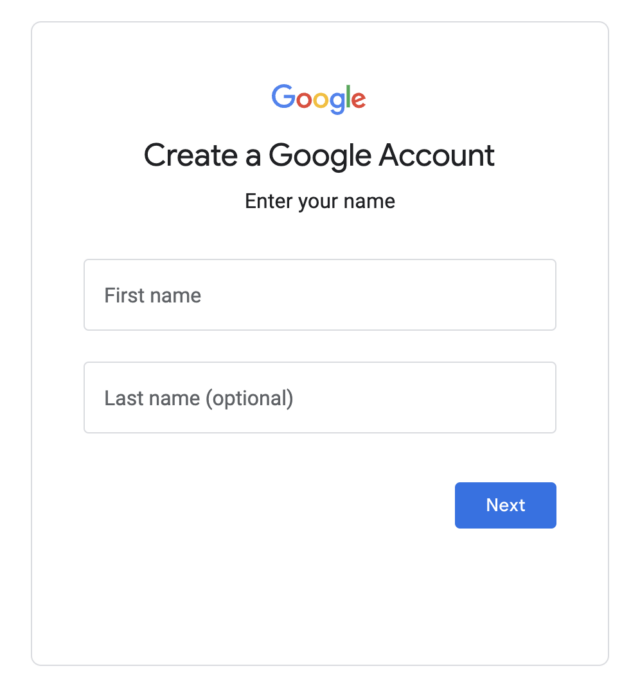
As you go through the process of setting up your account, you’ll be asked to choose a Gmail address as well. This is where you will be given the option to use your existing email.
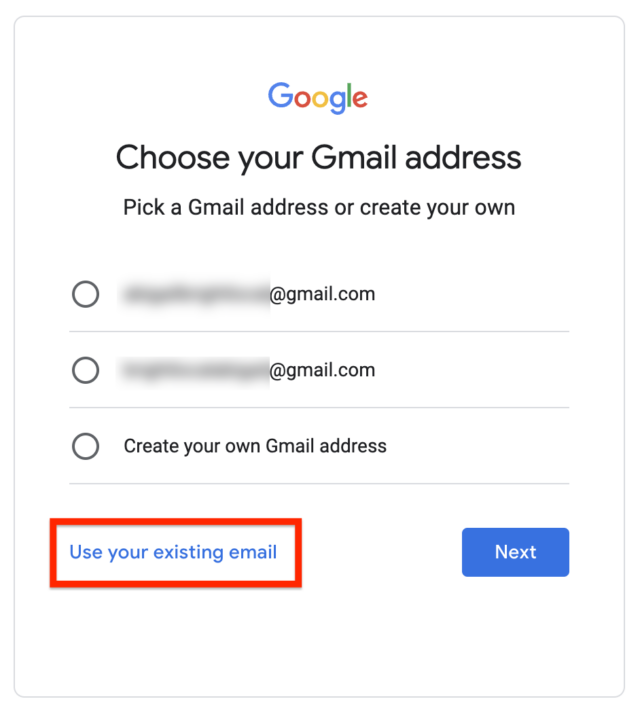
Follow the prompts until you have your new account.
Google notes that in a Google Account specifically for your business, you can turn business personalization on. This will make the process of setting up your Google Business Profile easier.
2. Visit the Google Business Profile Gateway
Once you have your new Google Account, head to google.com/business and click ‘Manage now’ to get started:
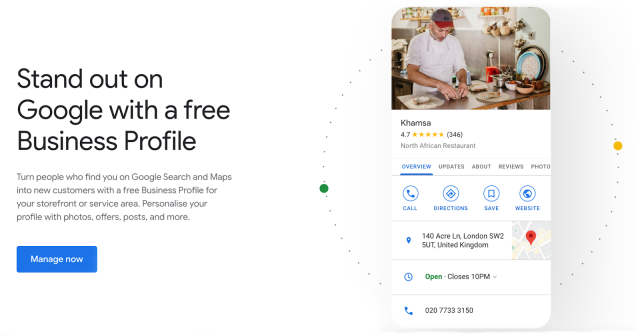
3. Look for the Business
Begin by typing in the business name to see if a profile with this name already exists. If it does, then you’ll see it appear as you’re typing. If the business name doesn’t appear, then go ahead and click ‘Add your business to Google’.
The name that you use here should exactly match the official business name. Don’t be tempted to add any keywords to the name, as this violates Google’s guidelines.
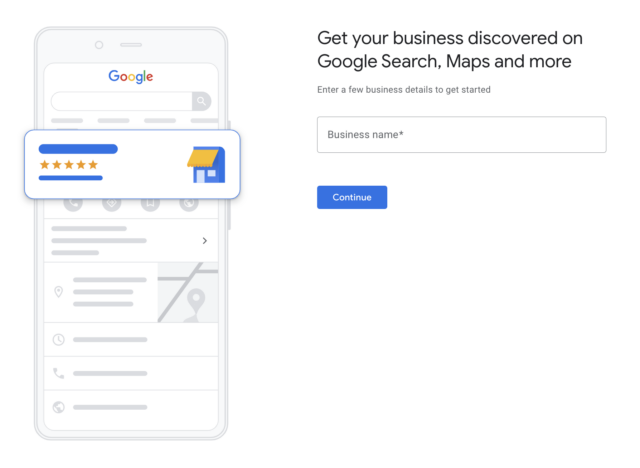
Requesting Access to an Existing Business Profile
If someone has already created a Google Business Profile for the business, then don’t worry. You can request that management of the profile be handed over to you. Simply click ‘Request Access’, and you’ll be guided through the process.
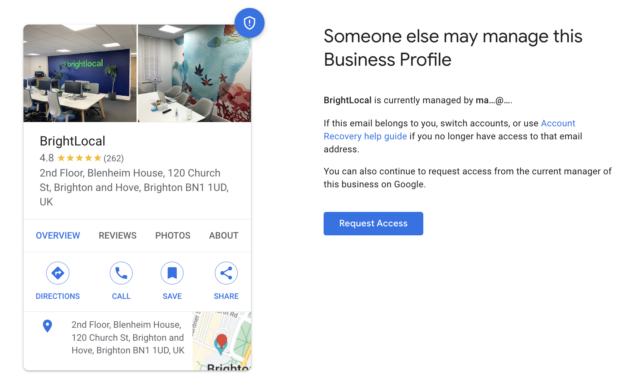
4. Choose Your Business Type
You’ll now need to share how you service your customers. If you have a location that customers can visit for face-to-face interactions, you will tick ‘Local store.’ If you’re a Service Area Business (SAB), where you visit customers to provide a service, you select ‘Service business.’
If the business only operates online or has a physical location but doesn’t receive customers in person and is not a SAB, then select ‘Online retail’ instead. If you list yourself as having or being an online retail store, you will have the option of adding a link to your online store.
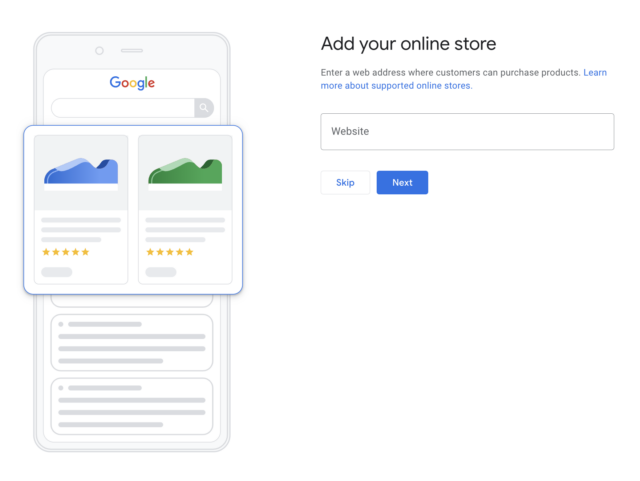
You can select more than one of these lists in the event that you are, say, a local store that also sells its products online.
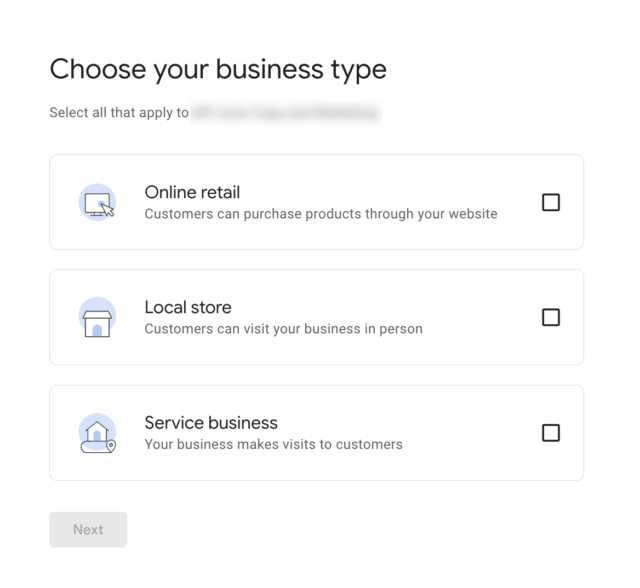
Warning: Don’t be tempted to inappropriately say the business has a physical location in an attempt to manipulate local rankings. The listing may get suspended or removed entirely in the future for violating the guidelines in this way.
Service Area Businesses
At this point, if your business is a service-area business or if the business delivers items to customers at home, then you might have a few additional pages to fill out. Simply follow the prompts.
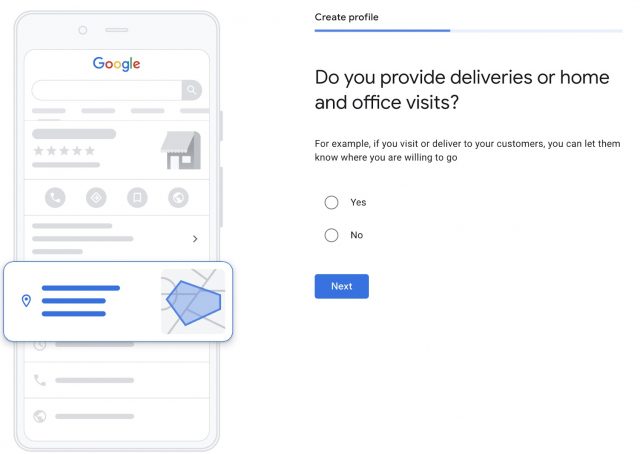
You’ll be able to come back and edit this information later, and you’ll be able to add new locations any time the business expands.
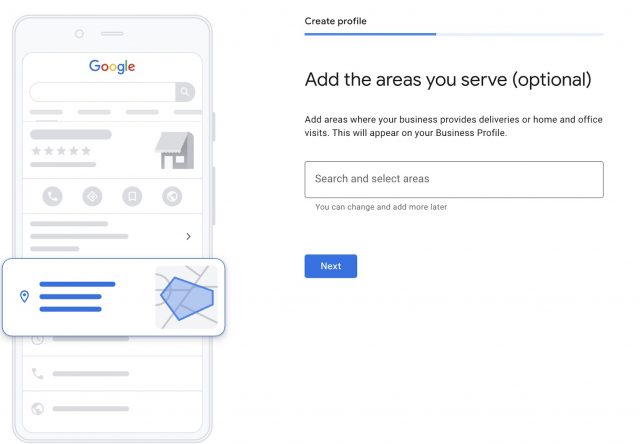
5. Add Your Business Category
Here, you should choose the category that most closely matches the business. You’ll have the option to edit this within the profile later, as well as to add additional categories, so don’t worry if you’re not completely sure what to select right now.
For guidance, check out our advice for local businesses on how to choose the best GBP categories.
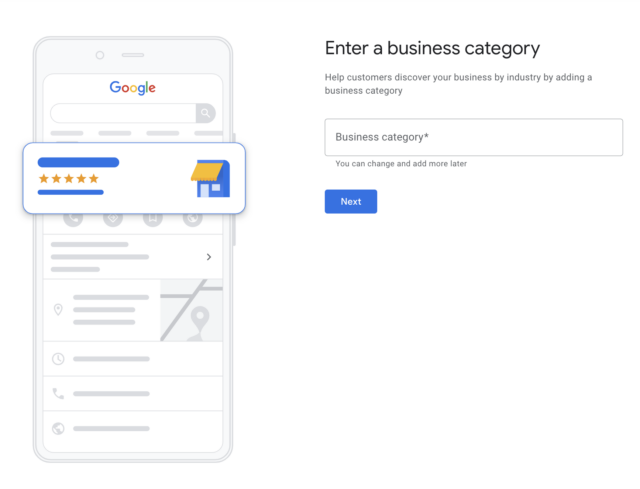
6. Enter the Business Location
If the business has a physical location, then you can now provide the address. You might be asked to position a pin on a map to confirm the location.
It’s important that the address you give is accurate and complete to prevent any confusion to customers or issues with the verification process.
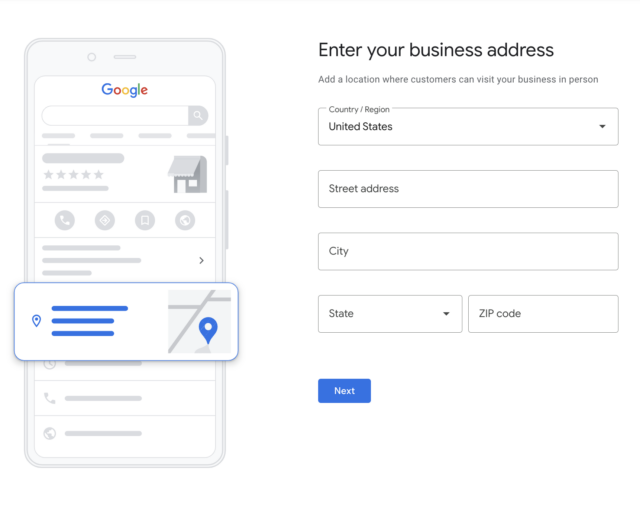
If there’s a similar business nearby, Google might ask again if you are looking to claim a different business. If you’re not, simply select ‘None of these’ and hit next.
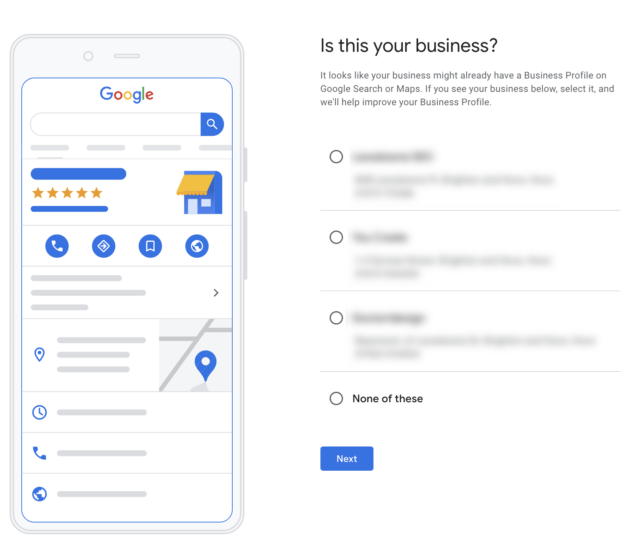
7. Add Contact Details
The next step is to add the contact details for the business. First, you’ll need to enter the proper phone number for your business. Remember, this is where you’ll be receiving calls for the business, so include the number that you plan to be interacting with customers via.
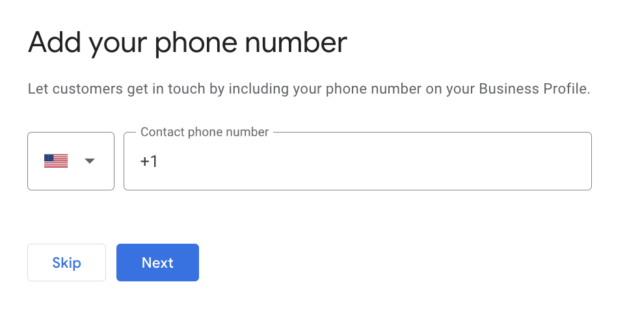
Note: if you’re an agency setting up GBP for a client, you’ll need to enter the client’s contact details, not your own. It’s a good idea to communicate clearly to your client that they’ll be contacted by Google for the verification process, which we’ll explore shortly.
Finishing up this step will create your profile, but it’s not quite live yet.
At this point, you’ll also be asked if you’d like to receive helpful tips and recommendations from Google. Although there’s no obligation, you might find it beneficial to receive this information.
8. Add Your Services
Now, it’s time to showcase the services your business offers. You can select from a list of selected services, or add custom ones.
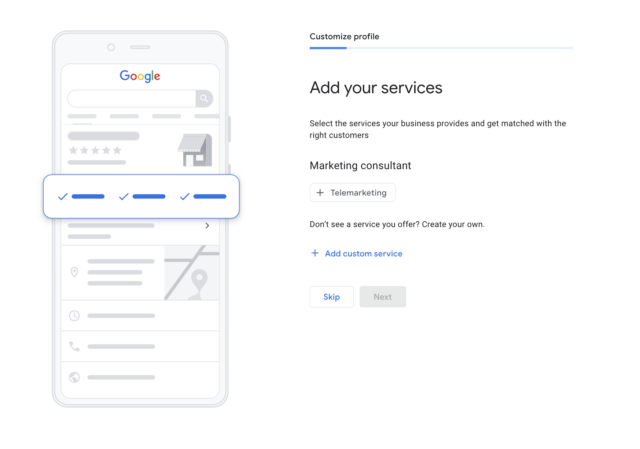
9. Add Your Hours
Adding your business hours is essential so that potential customers know when they can visit or contact you.
It’s imperative that the hours you specify are accurate, and you should always edit this information if your opening hours change—whether permanently or temporarily.
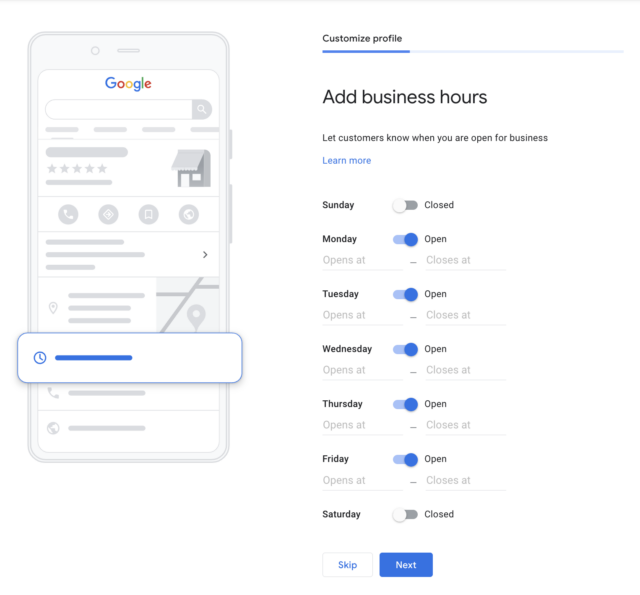
There are several reasons why your hours of operation may temporarily change, such as public holidays or staff illness. In these cases, it’s a good idea to let your customers know. For more information on why this is important and how to do it with ease, check out our guide to managing opening hours in Google Business Profile.
10. Toggle Messaging
Here, you can choose whether you want your customers to message your business on Google. While it is a free offering, you should only use this if you are confident that you can quickly get back to customer messages. Being unresponsive to messages will create a poor user experience and could harm your business reputation.
In fact, if you don’t respond within 24 hours, Google might remove your ability to chat with customers via this avenue. Customers can also see the average time you take to respond to messages.
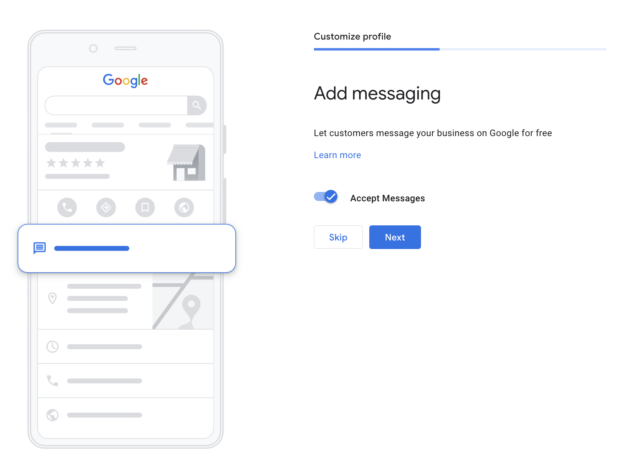
If you do wish to accept messages, then simply click the button. You can come back and pause or disable this feature at any point.
11. Add a Business Description
This is where you can go ahead and add a description of your business that will be seen on Search, Maps, and other Google services. It’s a good place to tell your potential customers a bit more about your business in ways that might not be reflected in your profile, such as what sets you apart from other businesses or your beliefs.
You can write up to 750 characters within this section, so be sure to use this opportunity to put the most important information across in a clear and concise way. Remember that you cannot include URLs here.
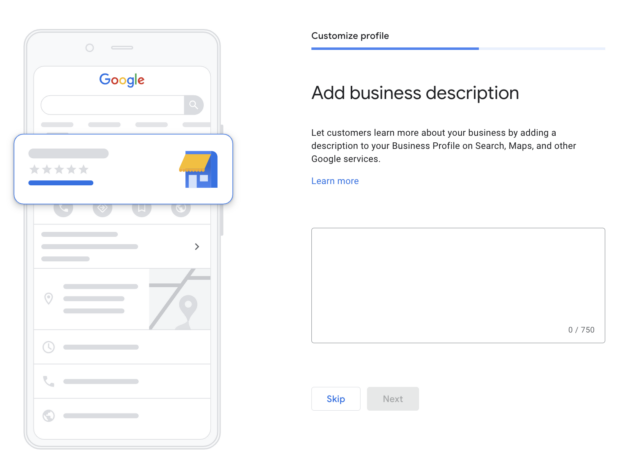
12. Add Photos
Adding photos is a fantastic way to help searchers visualize the business and to get a glimpse of the brand. Google has a great guide on what sort of photos you should look to feature on your profile.
Customers can add their own photos to the listing; some people will choose to do this when leaving you a Google review.
Be aware that you won’t have any control over the order in which photos appear on your listing, so it’s a good idea to have several of your own photos mixed in with the user-generated content.
Make sure you showcase different aspects of your products and services and different areas of your physical location.
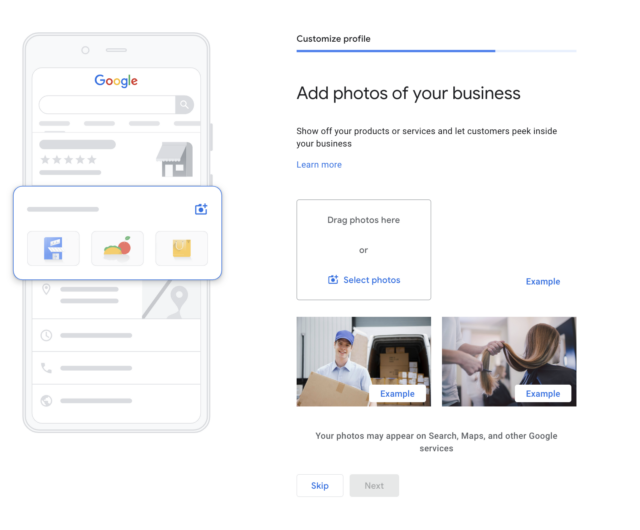
13. Set Up Google Ads (Optional)
You’ll be given the option to advertise with Google Ads. This can always be skipped and revisited later!
14. Verify the Business
In this step, you’ll be required to choose a verification method to prove the business is operating at the specified address. Receiving a postcard by mail to the business address is the most common route for verification, but you might also have the option to do so via phone or email.
Note: You can continue to make edits and updates to GBP while verification is pending, but the profile won’t be visible on Google during this time.
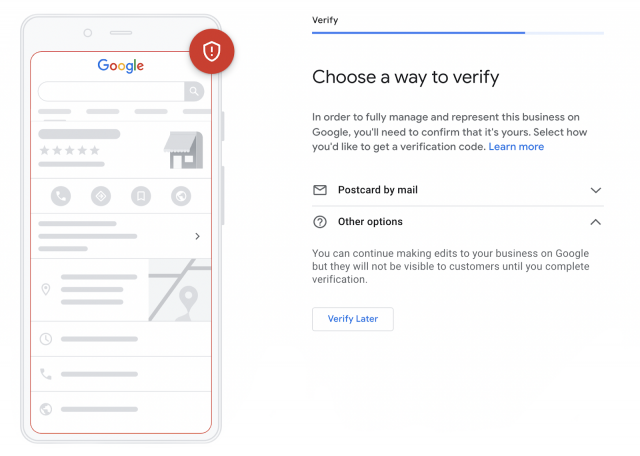
Video Verification
This type of verification has become the most common way for businesses to get verified. Make sure you have everything ready when you start recording.
Postcard Verification
This type of verification is available to all businesses. A postcard will be sent to the business address and will usually arrive within five days.
The postcard will contain a code that must be entered into the appropriate place within the GBP account. If you don’t receive the postcard, then you can request a replacement.
Phone Verification
Some businesses will be able to verify their accounts over the phone, but this option isn’t available to everyone. If you’re eligible, then you’ll see this option on the verification page.
If you decide to use this method, then you’ll receive a code via an automated phone call.
Email Verification
As with phone verification, the email alternative isn’t available to everyone.
If you do have the option to verify by email, then you can request a code to your inbox. This will only be possible to the email address connected to the GBP account.
Read more: Verifying your Google Business Profile
16. Add Social Media Profile Links
While Google does tend to pull these from other parts of the web, including your business website, most users will have the option to expand on or overwrite these via a few simple steps:
-
Go to your Business Profile.
-
Click ‘Edit profile’ and then ‘Business information’ and then ‘Contact’.
-
To edit, click ‘Social profiles’ and then the down arrow.
-
In the drop-down menu that opens, select the social media link you would like to add.
-
In the web address field, add the link, then click save.

Optimize Your Google Business Profile
Once your listing is good to go, then it’s time to consider how best to optimize GBP to maximize visibility and conversions.
Some essential ongoing tasks include:
- Adding new photos and videos
- Using Google Business Profile Q&A to connect with your audience and answer their questions
- Creating Google Business Profile Posts to showcase offers and promotions
- Listing your services, products, or menu items
- Requesting Google reviews
For expert advice on optimizing your GBP listing, check out this free course by Claire Carlile over on BrightLocal Academy. To learn more about GBP—and to become a local marketing pro—you’ll also want to sign up for our newsletter!
